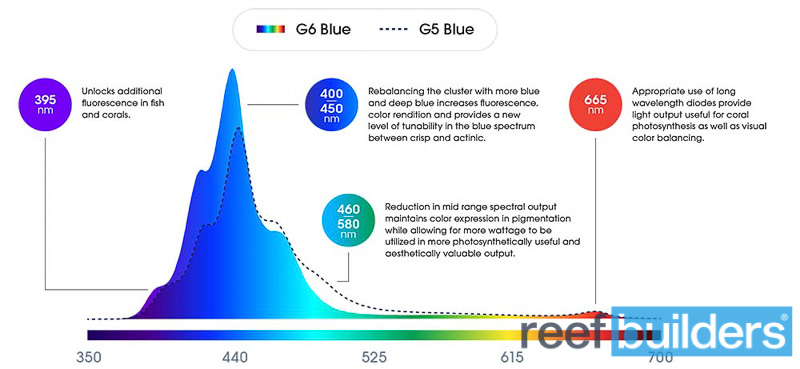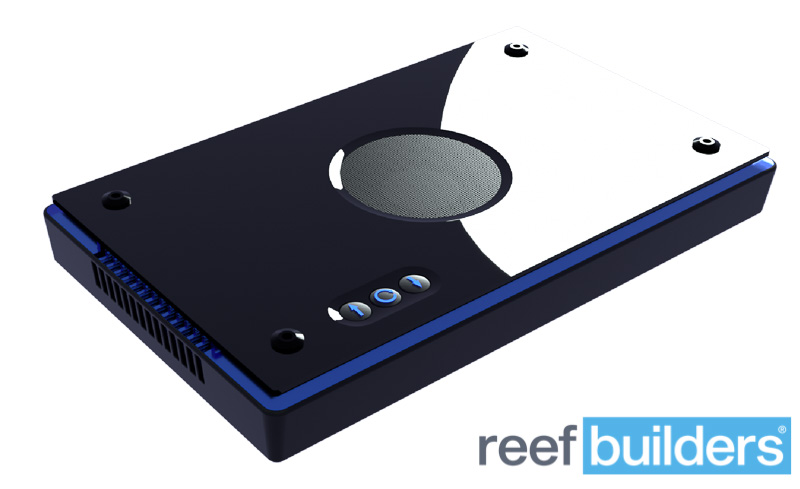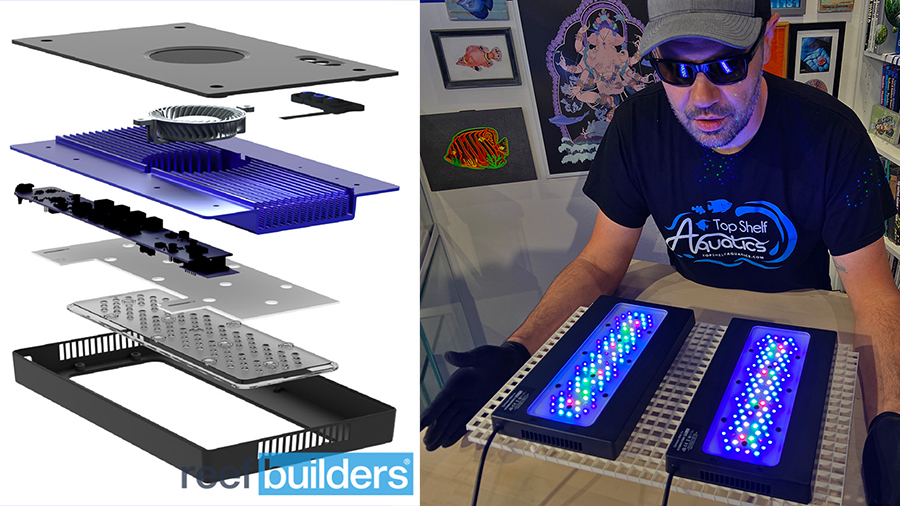Ecotech Marine just officially announced their sixth generation of Radion LED lights, the all new Radion G6 available Pro and Blue models with tweaked spectrum and finely tuned spread. On the surface it’s hard to see as many physical changes in the G6 as we saw in the G5 but the sixth generation of Ecotech Marine’s flagship reef light is one of the most substantial improvements the company has ever made to their light.
The refinements to the new Radion G6 can be classified into two broad categories, the complete spectrum and the overall light spread, which seems minute compared to adding more LEDs or more power but there are some big ramifications of these changes. All of the LEDs have been completely revamped with newer generation diodes that have been carefully selected for wavelength peak, spectral coverage, efficiency, and even how their primary lenses works in tandem with the Radion’s secondary lens cluster.
The most discrete change to the Radion G6 Pro and Blue is that Ecotech Marine has reduced or eliminated some of the lesser used color channels such as Cyan and Lime, and the overpowered Cool Whites. This reshuffling affords the Radion G6 extra headroom for more color-balancing Warm White, and some of the more desirable color channels such as 430nm Violet, and the newly introduced 395nm near-UV LEDs.
The Radion G6 Pro loses 8 cool white LEDs and 2 x 405nm UVs which are reallocated to provide two more warm whites, four more 430nm violets, and four 395nm UV diodes. The Radion G6 Blue loses eight royal blue LEDs, as well as the four limes and 10 cyans and two UV 405 nm to make room for eight more blue LEDs, six more violet 430nms, four 395nm blues and four warm whites and two extra cool whites to balance out the spectrum.
It’s hard to picture how these changes have affected the overall color and spectrum of both the Pro and Blue Radion G6 using only your imagination. But it’s when you see the lights over a reef tank with live corals that you’ll really be able to appreciate the improvements to how much more of the light spectrum goes towards making corals look great.

The whites are in much better ratios relative to the three different shades of blue. The extra 430nm violets really contribute to to a more ‘Actinic punch’ and likewise the newly included 395nm near-UV increase the pop and fluorescence of exotic coral pigments, especially the blue fluorescent protein of many Acropora corals that are only excited by high energy wavelengths.
The uniformity of the Radion G6 Pro & Blue spectrum doesn’t originate solely from the redistribution of the LEDs as the spread has increased from 110 to 126 degrees which is unheard of in a light using a secondary lens cluster. You’d be forgiven for believing that the newfound extra 15 degrees of spread is engineered into the lens cluster but it actually derives from the careful selection of LEDs with a specific quality to the primary lens to work in tandem with the 100 aggregated lenses.

The improved light spread practically eliminates the disco ball effect caused by using spaced out LEDs of different colors, resulting in an extremely flat light field which can better take advantage of internal reflection from the aquarium glass. The only remaining reason to use the secondary magnetic diffuser is if you really want a perfect replication of T5 fluorescent lighting with virtually zero shimmer, although the coverage will actually decrease from running a Radion G6 without it!
In the first part of our Hands On video of the Radion G6 Pro & Blue we compare each variant of the Radion XR30 to its fifth generation predecessor and there’s a lot of hidden details lurking under the hood. We document each of these discoveries as we put each light head to head, G5 vs G6, on the workbench as we get a feel for them before putting them over live corals.
We’ll be spending the next few days scrutinizing our corals and two different reef tanks with the Radion G5 and G6 mounted side by side so we can really see the difference between the Pro and Blue version of each light so stay tuned for the second part of our hands-on video where we’ll have some more practical observations of how our corals look under Ecotech Marine’s bleeding edge reef aquarium LED light.



